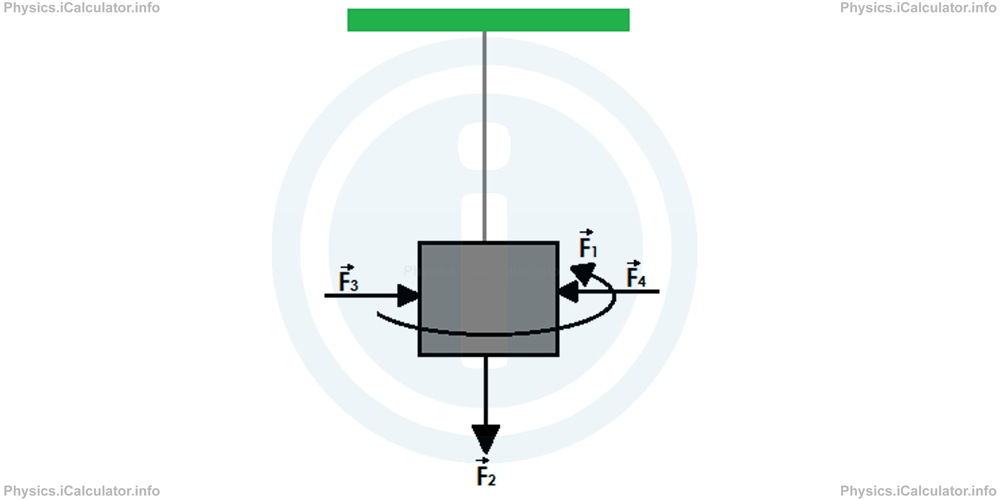Menu
Physics Lesson 4.1.1 - What causes motion?
Please provide a rating, it takes seconds and helps us to keep this resource free for all to use
Welcome to our Physics lesson on What causes motion?, this is the first lesson of our suite of physics lessons covering the topic of What Causes Motion? The Meaning of Force, you can find links to the other lessons within this tutorial and access additional physics learning resources below this lesson.
What causes motion?
In the previous chapter "Kinematics", we discussed extensively about various types of motion and the kinematic quantities involved in them. However, nowhere in the entire chapter the factors causing those kinds of motion were mentioned; only the way how objects move and physical quantities such as position, displacement, distance, velocity, speed and acceleration were discussed in it.
This is a serious drawback; it is like a doctor who deals with the disease of a patient without knowing what has caused it. Therefore, it is very important knowing what causes a motion (or a change in motion rhythm) to understand it in full.
In Physics, the factors that cause an object move or change its motion are known as forces. By definition, "a force is any interaction that, when unopposed, will change the motion of an object." In simpler words, a force can be described as a push or a pull.
Basically, a force can cause one of the following effects on objects:
- Changing the velocity of an object. This includes starting a motion, stopping a motion, speeding up or slowing down a moving object.
- Changing the moving direction of an object. This includes deviating, rotating, swinging.
- Changing the shape of an object. This includes squeezing, bending, stretching, compressing, twisting, breaking an object in pieces or welding a broken object.
Remark! A force cannot change the mass of an object. Mass is a physical quantity related to the amount of matter contained in an object, so a force can neither create nor destroy the matter.
Force is a vector quantity. This means it involves the direction. As stated in the Physics tutorial "Vectors and Scalars", the information regarding a vector quantity in physics must contain four elements: direction, magnitude, unit and application point, in order to be considered as complete. If one of them is not given, this creates serious problems in studying any process in which the force in question is involved.
The unit of force is Newton (in short N). Newton is a derived SI quantity because when splitting it into fundamental SI units, we obtain
Generally (when not specified the type of force involved), a force is denoted in formulae by the letter F. Also, a vector sign is placed above it to show that it is a vector. Therefore, we can write
Example 1
An object is hanged on a rope as shown in the figure below.
What effects do the forces in the figure cause on the objects in which they act?

- F⃗1 on the object
- F⃗1 on the rope
- F⃗2 on the rope
- F⃗3 on the object
- F⃗3 and F⃗4 simultaneously on the object
Solution 1
F⃗1 is not a linear force; it causes the object revolve around itself. Therefore, it causes a rotating effect on the object.
The rotating object causes the rope twist. Therefore, F⃗1 causes a twisting effect in the rope.
The force F⃗2 pulls the object downwards. Therefore, it causes a stretching effect on the rope.
If only the force F⃗3 acts on the object, it makes it displace due right. As a result, the object starts swinging around the vertical position for a while.
If F⃗3 and F⃗4 act simultaneously on the object, they compress it due to the simultaneous pushing effect caused on the object by these two opposite forces.
You have reached the end of Physics lesson 4.1.1 What causes motion?. There are 4 lessons in this physics tutorial covering What Causes Motion? The Meaning of Force, you can access all the lessons from this tutorial below.
More What Causes Motion? The Meaning of Force Lessons and Learning Resources
Whats next?
Enjoy the "What causes motion?" physics lesson? People who liked the "What Causes Motion? The Meaning of Force lesson found the following resources useful:
- What Feedback. Helps other - Leave a rating for this what (see below)
- Dynamics Physics tutorial: What Causes Motion? The Meaning of Force. Read the What Causes Motion? The Meaning of Force physics tutorial and build your physics knowledge of Dynamics
- Dynamics Revision Notes: What Causes Motion? The Meaning of Force. Print the notes so you can revise the key points covered in the physics tutorial for What Causes Motion? The Meaning of Force
- Dynamics Practice Questions: What Causes Motion? The Meaning of Force. Test and improve your knowledge of What Causes Motion? The Meaning of Force with example questins and answers
- Check your calculations for Dynamics questions with our excellent Dynamics calculators which contain full equations and calculations clearly displayed line by line. See the Dynamics Calculators by iCalculator™ below.
- Continuing learning dynamics - read our next physics tutorial: Types of Forces I. Gravitational Force and Weight
Help others Learning Physics just like you
Please provide a rating, it takes seconds and helps us to keep this resource free for all to use
We hope you found this Physics lesson "What Causes Motion? The Meaning of Force" useful. If you did it would be great if you could spare the time to rate this physics lesson (simply click on the number of stars that match your assessment of this physics learning aide) and/or share on social media, this helps us identify popular tutorials and calculators and expand our free learning resources to support our users around the world have free access to expand their knowledge of physics and other disciplines.